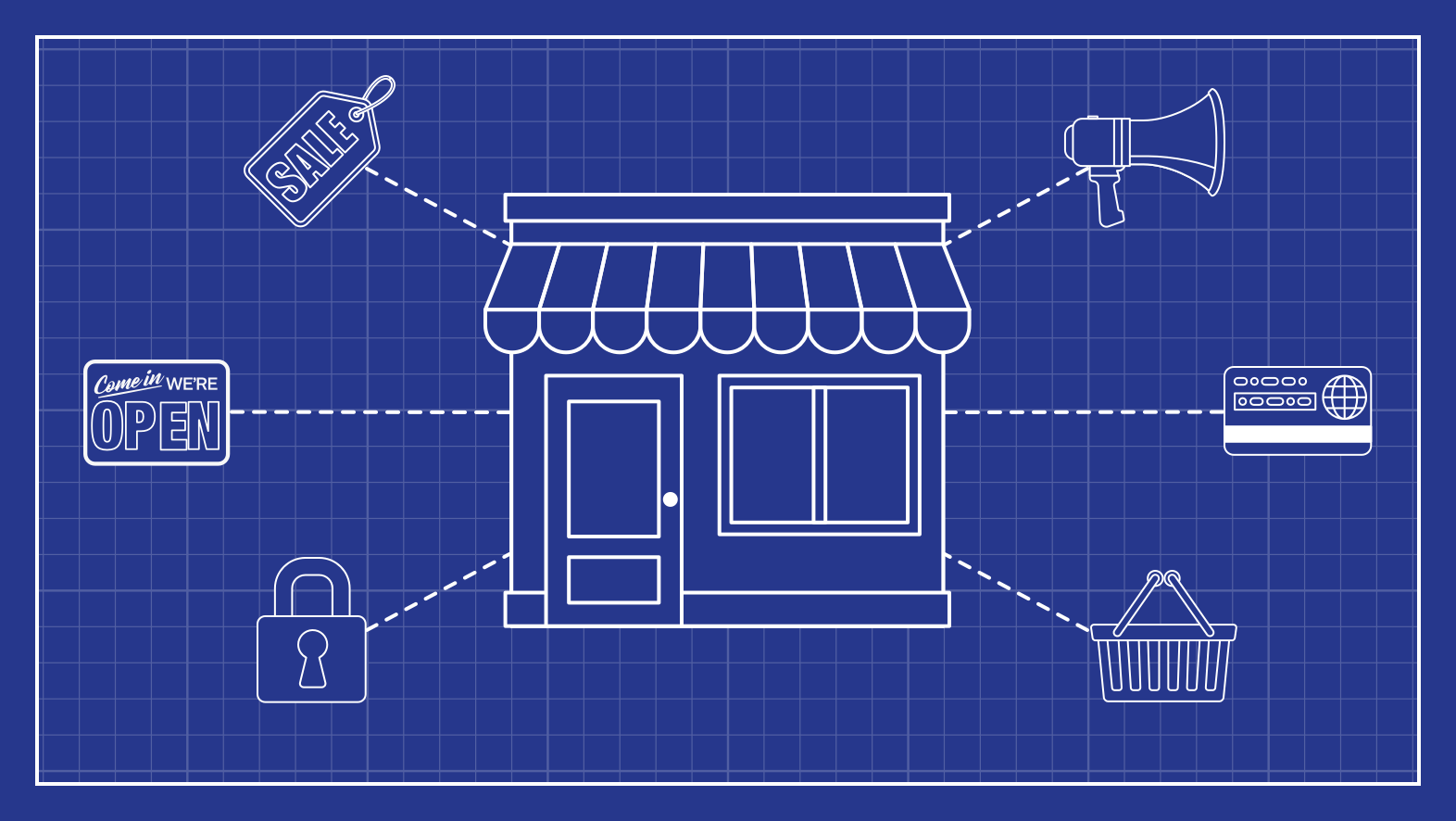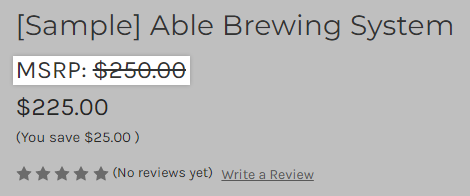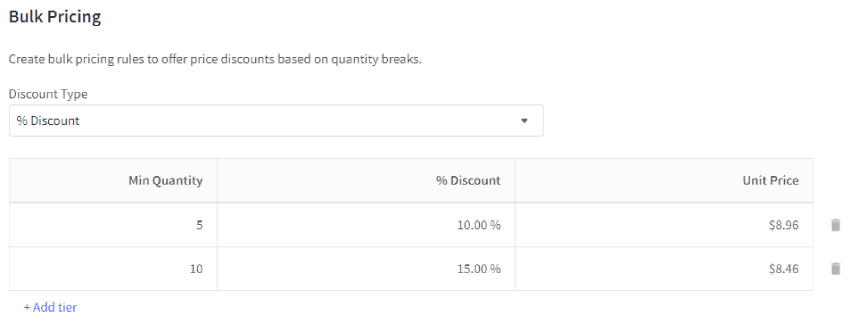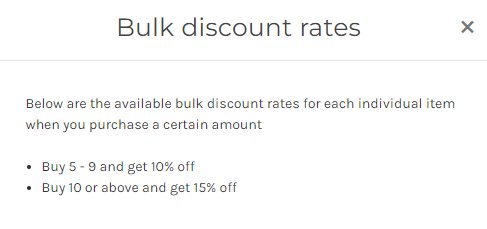
A product’s price is often the deciding factor when shoppers make a purchase. In this chapter, we’ll show you how to use the different product pricing fields, customize your price display, and create different types of discounts to draw shopper attention and drive conversions.
Note: Pricing changes can take up to 10 minutes to appear on the storefront. See our FAQ on price changes for more information.
Product Pricing Fields
Your product’s pricing fields can be found in the Pricing section of the Add Product page. For products with variant options, you can edit prices for each variant in the Variants table. Since modifiers use rules to adjust the price of the base product, they do not have additional pricing fields of their own.

The Default Price field is where you can specify your product’s standard price. This field is present in both the Basic Information and Pricing sections of the Add Product page. Product variants use the product’s default price upon creation, but you can assign a unique default price to each variant from the Variants table.
If you are using the basic tax setup, the Tax Class field allows you to assign a specific tax class to your products. This is important if you have a subset of products that must be taxed differently from your main catalog, such as perishable goods.
If you are using an automatic tax solution like Avalara, use the Tax Provider Tax Code field to enter the provider-specific identifier to ensure that your product is taxed properly.
Advanced Pricing Fields
In addition to Default Price, you can enter other pricing options for your products. These pricing fields can be found by clicking Show Advanced Pricing in the Pricing section. Product variants use the values entered here by default, but you can specify advanced pricing options for each variant in the Variants table.

The Manufacturer's Suggested Retail Price, or MSRP, is the selling price recommended by your product’s supplier. If the MSRP is greater than your default price, the MSRP appears with a strikethrough above the default price on product pages and thumbnails. This can increase buyer confidence and encourage sales by emphasizing the reduced price of your product.

If you want to temporarily reduce the price of your product, use the Sale Price field to override the product’s default price. Like MSRP, the product’s sale price appears on product pages and thumbnails, and it causes the default price to display with a strikethrough. This is a great way to draw awareness during a promotional event like a flash sale, as it alters the product’s price everywhere that it’s displayed on the storefront.

Bulk Pricing
In situations where you want to encourage shoppers to purchase in higher quantities, such as wholesale products, bulk pricing allows you to discount your products based on the number added to the cart. Bulk pricing rules can be found with the advanced pricing fields in the Pricing section.

When assigning bulk pricing rules to your product, you can choose from three discount types: % Discount, $ Off/Unit, and $ Fixed Amount. For more information on how to use these discount types in your store, see How Bulk Pricing Works.
After you’ve specified a discount type, discount amount, and minimum quantity, shoppers can view your bulk pricing rules by clicking the Buy in bulk and save prompt on the product page.

For products with variant options, all variants will contribute to the quantity threshold when added to the cart. To assign variant-specific bulk pricing rules on a product, you must create a Price List. For more information on bulk pricing and the different discount types available, see Bulk Pricing.
Price Lists
For stores on an Enterprise plan, Price Lists allow you to create advanced product-level and variant-level pricing rules for your customer groups. Price Lists are located in Products › Price Lists.

Any pricing configured in a Price List will override the values entered on the Add Product page. Using Price Lists, you can implement a variety of pricing scenarios, such as:
- specifying different prices for guest customers versus. returning customers
- enabling bulk discounts for wholesale customers on individual products and variants
- establishing currency-specific pricing on your store
- entering a Minimum Advertised Price (MAP) for products and their variants via the API
To learn more about creating Price Lists in your store, see Using Price Lists.
Displaying Product Prices
After entering prices for your products, it’s just as important to manage how they appear to shoppers in your store by specifying who can see prices in your store, how variant pricing is displayed, and how to showcase discounted products. Utilizing the product price display settings in your control panel and Page Builder can help you optimize your storefront experience, increase conversions, and make the most of flash sales and other promotional events.
Information about theme settings is written for the Cornerstone theme. Check your theme’s documentation if you are unable to find the settings referenced below.
You can show or hide all prices in your store using the Show Product’s Price checkbox in Settings › Display. When unchecked, pricing is hidden for all products on the store and they cannot be added to the cart. This can be useful for showcasing your product catalog to shoppers before you’re ready to accept payments, or if your business model requires that shoppers call for pricing.

Additionally, you can configure your display settings to hide pricing from shoppers who are not logged into a customer account. For B2B businesses, this is a great way to restrict your products to established buyers. Check the box next to Hide Product's Price from Guests to enable this price display behavior.

A product’s default price is displayed at the top of the product details page, and underneath the product thumbnail on listing pages like categories, brands, and search results, as well as on homepage product panels. For products with multiple variant prices, edit your product display settings to specify whether you want the product’s default price or the lowest variant price to appear on product pages and thumbnails.

If you want your variant prices to appear as a range from lowest to highest, enable the Show price ranges for products with variants setting in Page Builder under Theme Styles › Global › Pricing. Note that this interacts differently with your product display settings for detail and listing pages. See Product Display Settings for more information.

If you’ve entered MSRP or sale pricing on a product, these prices are also displayed on product pages and thumbnails. The text labels for these prices can be reworded in Page Builder. To draw more attention to your on-sale products, you can also enable sale badges with customizable design and text. These settings are located in Theme Styles › Products › Product sale badges.

Offering Product Discounts
In addition to sale pricing, cart-level discounts are a great way to provide shoppers with special offers on select products. With the standard promotion editor, you can draw more shoppers and increase average order value by creating discounts that can be restricted to a handful of products or extended to entire categories and brands.
Automatic promotions allow you to set conditions that your shoppers must meet in order to receive a discount. Once met, the pricing is automatically adjusted in the cart. This is a useful method for setting up Buy One Get One sales or offers that any customer can take advantage of.

With coupon promotions, you can set the same conditions and restrictions as an automatic promotion, but your customers must enter a specific coupon code in order to receive the discount. Coupon promotions are best for deals that are meant for specific customers, such as VIP customer discounts and incentives for recovering abandoned carts.

The legacy editor allows you to advertise your promotions with storefront banners. See Automatic Promotions and Coupon Promotions for more information on creating promotional banners.
In the next chapter, we’ll introduce categories and brands, and discuss their organizational benefits for your products.


